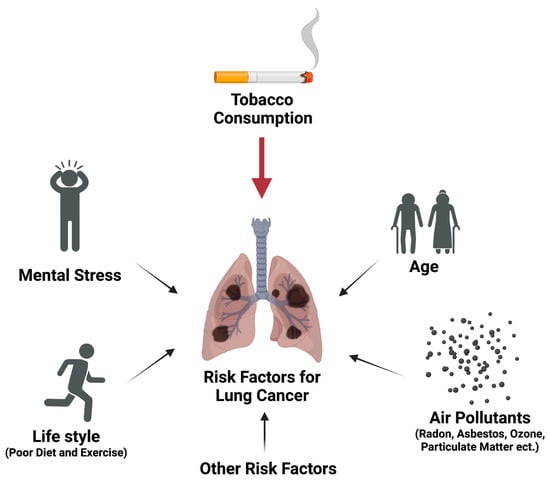New Review on Kava's effect on Lung Cancer |
|---|

Opportunities and Challenges of Kava in Lung Cancer PreventionLung cancer is the leading cause of cancer-related deaths due to its high incidence, late diagnosis, and limited success in clinical treatment. Prevention therefore is critical to help improve lung cancer management. Although tobacco control and tobacco cessation are effective strategies for...
Freeman, Breanne, Jessica Mamallapalli, Tengfei Bian, Kayleigh Ballas, Allison Lynch, Alexander Scala, Zhiguang Huo, et al. 2023. “Opportunities and Challenges of Kava in Lung Cancer Prevention.” International Journal of Molecular Sciences, May. https://doi.org/10.3390/ijms24119539. |
This is an excellent review of the supporting evidence of kava's possible anticarcinogenic properties.
I only had issues with one section, and that was section 4.4 (predictably).
This section is titled "Potential Risks Associated with Kava Use, Particularly in the Chronic Use".
I'm going to go through them sentence by sentence.
Sentence #1 also cited as 148:
This source literally speaks about the Pacific kava paradox being rejected. 180° from what the author is attempting to use it for.Besides these potential benefits, kava has been associated with hepatotoxic potential even though the risk was rated extremely rare and idiosyncratic with a wide range of mechanisms and responsible ingredients proposed, including chalcone-based flavokavains and various kavalactones [148].
"At present, little evidence exists that the primary psychoactive constituents (kavalactones) or other constituents (pipermethystine and flavokavain B) of the kava plants are the toxicological culprits for kava hepatotoxicity"
Sentence #2 cited as 149:
This part is actually from two totally different sources than 149.Specifically, chalcone-based flavokavains A and B have been demonstrated to induce hepatotoxicity in animal models or potentiate acetaminophen (APAP)-induced hepatotoxicity, potentially via the depletion or reduction in endogenous glutathione level [149].
They are: Narayanapillai, Sreekanth C., Pablo Leitzman, M. Gerard O’Sullivan, and Chengguo Xing. 2014. “Flavokawains a and B in Kava, Not Dihydromethysticin, Potentiate Acetaminophen-Induced Hepatotoxicity in C57BL/6 Mice.” Chemical Research in Toxicology 27 (10): 1871–76. https://doi.org/10.1021/tx5003194.
Yang, Xi, and William F. Salminen. 2011. “Kava Extract, an Herbal Alternative for Anxiety Relief, Potentiates Acetaminophen-Induced Cytotoxicity in Rat Hepatic Cells.” Phytomedicine: International Journal of Phytotherapy and Phytopharmacology 18 (7): 592–600. https://doi.org/10.1016/j.phymed.2011.02.006.
The first source uses levels of FKB 100 to 1,000 fold higher than what could be seen drinking an entire kilo of noble kava powder.
The second source uses APAP at a human equivalence of 16,000mg. Neither of these two studies can be said to replicate what is happening in-vivo.
Sentence #3 is correct:
Sentence #4 cited as 150 & 151:The content of flavokavains A and B indeed were found to be higher in kava plants not recommended for human use in comparison to those popular for traditional consumption.
Source 150: Uses Almeida's trash document to suggest pharmacodynamic interactions with benzodiazepine and kava. Also uses 100µM directly applied to cells, a concentration level we would never see in the human body.Kavalactones have also been suspected to contribute to kava’s hepatotoxic risk, potentially through drug herb interactions since various kavalactones have been reported to modulate several CYP enzymes [150,151]
Results of 150&151 are not reproducible in-vivo.
Sentence #5 cited as 87:
The authors here go back and attempt to explain that these cell-based models may not coincide with what actually happens in the human body. No issues here.The concentrations or doses of kavalactones evaluated in the biochemical or cell-based models may have limited human physiological relevance based on our recent pharmacokinetic studies of kava [87]
Sentence #6:
Kava's safety has been monitored quite closely for the last 25 years. Considering we've had no credible instances of adverse events involving the liver in the last 20 years (Per the FDA adverse events database), I would say the "safety" of kava has been proven quite continuously over the last two decades.Nonetheless, the safety of kava needs to be closely monitored in future human translation, particularly for its potential chronic use in lung cancer risk reduction.
Other than this one section, this is an excellent review. Highly suggest giving it a read over.
Last edited:
